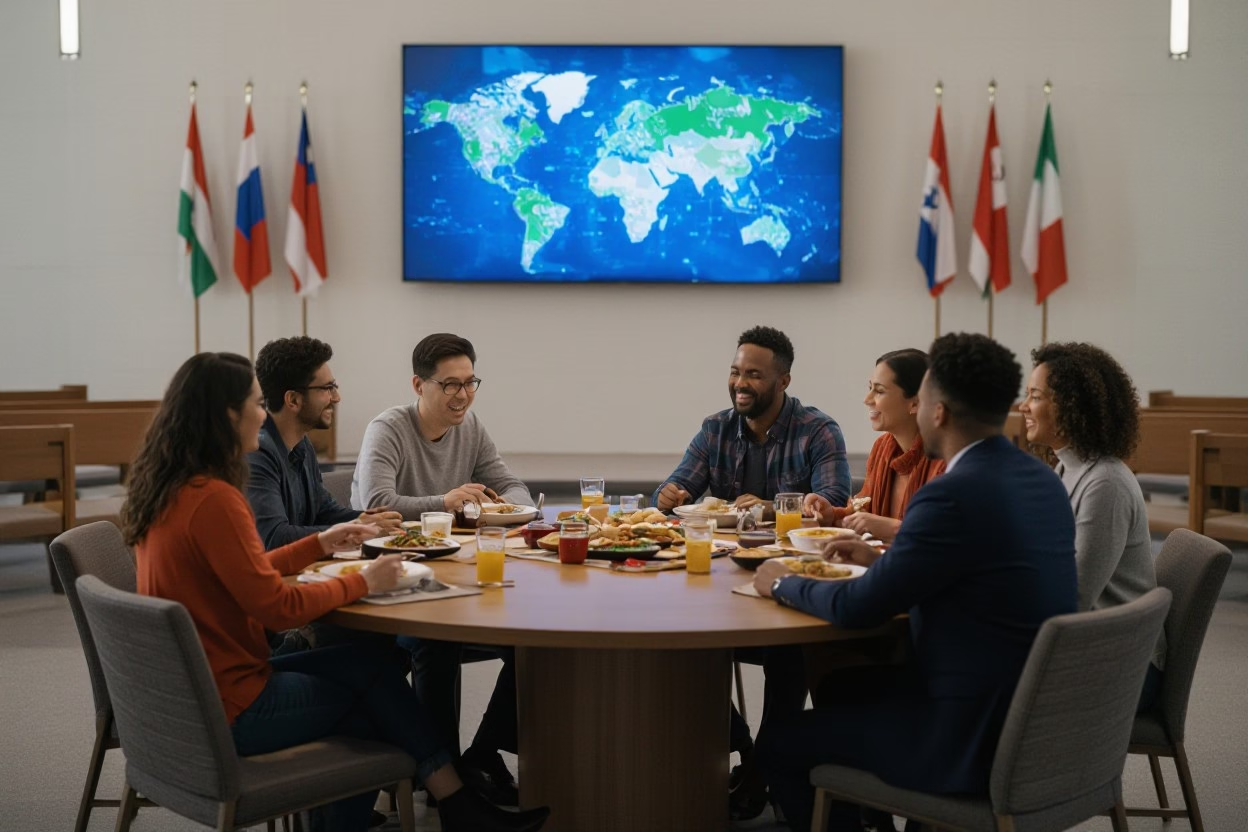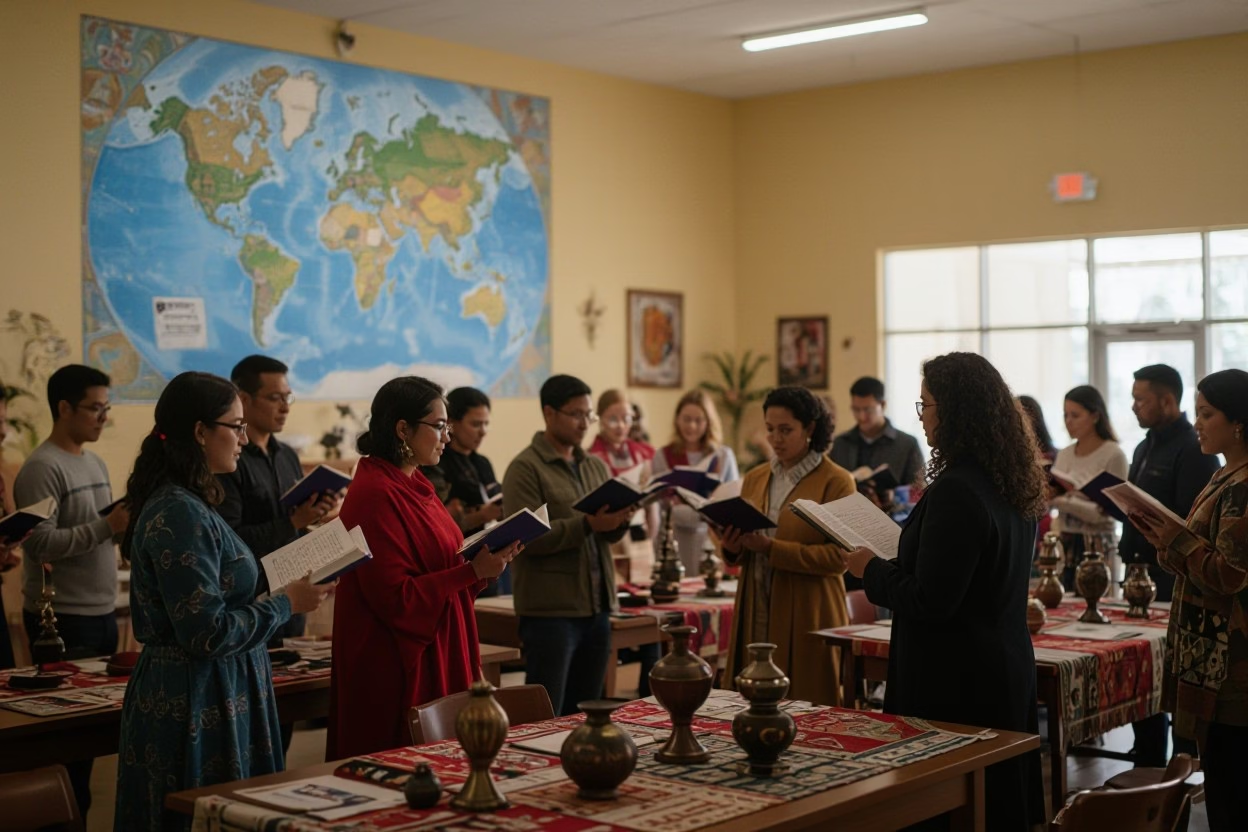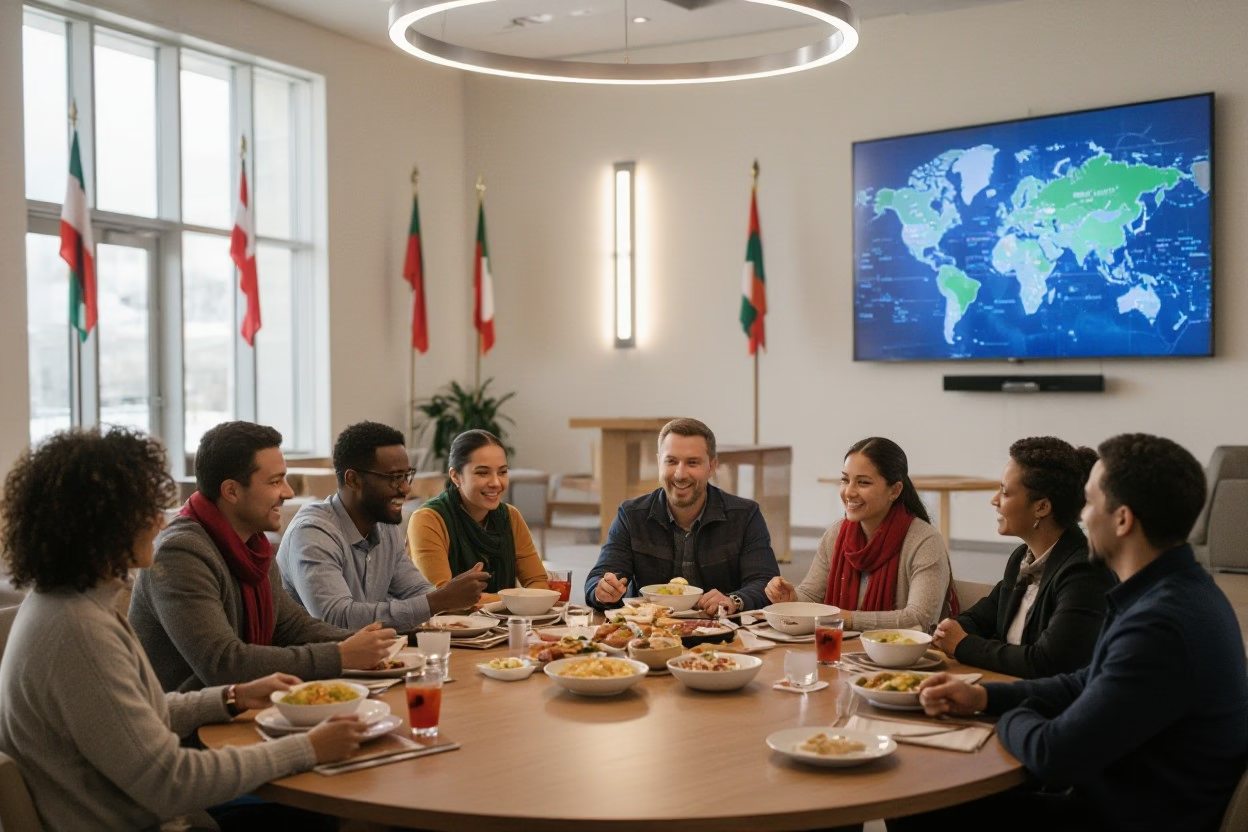There’s a growing need for churches to adapt as migration rapidly diversifies congregations worldwide. They encounter both opportunities for renewal and challenges around integration. By creating welcoming spaces, embracing bilingual practices, and fostering shared leadership, churches become vital communities where migrants find belonging and empowerment. As they invest in mutual relationships and practical support, congregations not only enhance migrant wellbeing but also enrich their own spiritual life, reflecting a microcosm of God’s global family in today’s mobile, multi-ethnic world.
Key Takeaways:
- Creating welcoming church spaces provides migrants with a sense of belonging, safety, and opportunities to develop social capital.
- Incorporating bilingual and bicultural practices supports migrants’ integration and enriches worship without compromising core beliefs.
- Empowering migrants through shared leadership and service builds mutual respect and strengthens the entire congregation.
- Partnerships between congregations and immigrant churches foster mutual learning, fellowship, and cultural exchange.
- Engagement in church life connects migrants to broader community storytelling networks, enhancing civic participation and belonging.
- Holistic ministry approaches combining spiritual care with practical support advance trust and show Christ’s love in action.
- Intentional listening, celebrating diversity, investing in relationships, and broad collaboration expand the church’s impact in a mobile, diverse world.

Creating Spaces of Belonging
Churches become transformative places when they transcend mere hospitality and foster genuine belonging. Migrants often seek not only spiritual nourishment but also environments where they feel seen, valued, and connected. Intentional efforts to design spaces and experiences that affirm identity and dignity enable newcomers to move from isolation to active participation. This shift elevates the church from a transactional site of aid to a vibrant community that mirrors the diverse tapestry of God’s kingdom.
Within such spaces, established members gain fresh perspectives, enriching their faith and broadening cultural understanding. The reciprocal nature of belonging builds social capital, reducing feelings of alienation while encouraging cross-cultural friendships and partnerships. This dynamic creates a foundation where migrants and longtime congregants alike contribute to a resilient and inclusive church identity.
Designing Welcoming Environments for Migrants
Physical and symbolic markers convey belonging in powerful ways. Strategically placed signage in multiple languages, culturally resonant artwork, and inclusive worship practices signal openness and respect. For example, a church in Sydney integrates English, Spanish, Arabic, and Mandarin on directional signs and bulletin materials, immediately easing newcomers’ navigation and fostering comfort. Spaces designated for informal fellowship, such as shared meal areas where traditional foods are brought and shared, help bridge cultural divides.
The subtle incorporation of familiar cultural expressions in worship—like diverse musical styles or bilingual prayers—enhances participation without compromising theological integrity. This bicultural and bilingual approach not only supports migrants’ transition but also invites all attendees to experience a richer, more expansive expression of faith. Such environments demonstrate a lived theology of inclusion and celebrate diversity as an asset rather than a challenge.
Fostering Social Capital through Community Engagement
Social capital emerges when relationships extend beyond church walls into neighborhoods and workplaces, creating networks of mutual support. Migrants often arrive with limited social connections, and churches that facilitate friendships, mentoring, and communal activities serve as vital hubs for social integration. A notable example is a Minneapolis church that organizes monthly community service days, where migrant and long-term members work side by side on local improvement projects, strengthening trust and solidarity.
These engagements allow migrants to build practical connections while contributing their own skills and experiences. Churches that intentionally create such opportunities move beyond one-way assistance to cultivate environments where migrants become active agents of change and community builders. This approach not only enhances individual wellbeing but also promotes the flourishing of the wider neighborhood.
Research supports that churches serving as centers of social capital can mitigate the risks associated with social exclusion and isolation. By linking migrants to local storytelling networks—informal clusters of relationships tied to shared histories and civic activities—churches empower newcomers to participate fully in civic life. This networked integration encourages greater community stability and fosters a collective resilience that safeguards against divisions often exacerbated by rapid demographic shifts.

Embracing Language and Cultural Fusion
Migrants often arrive with distinct linguistic backgrounds that shape how they engage with church life. Creating bilingual environments within congregations not only facilitates understanding but also signals a deep respect for cultural identity. Churches incorporating multiple languages in services, announcements, and educational programs help bridge divides, making participation accessible and meaningful. For example, a church offering simultaneous translation or alternating sermons between languages sees higher attendance and retention among migrant members, demonstrating that language inclusion is a practical key to sustained integration.
The blending of cultural expressions alongside language enriches the spiritual experience for all congregants. When churches welcome diverse cuisines during fellowship gatherings or celebrate festivals significant to different communities, they foster a multifaceted worship environment. These practices address the emotional and social needs migrants have, reducing isolation and encouraging authentic relationships across cultural lines. The mutual sharing of traditions offers existing members an opportunity to broaden their worldview and deepen empathy, nurturing a unified yet diverse congregation.
Implementing Bilingual and Bicultural Practices
Programs that actively incorporate bilingual materials and bicultural cues create an inviting atmosphere where migrants feel seen and valued. This may include bilingual hymnals, signage in multiple languages, or outreach materials tailored to specific communities. Congregations that incorporate these strategies report a notable increase in engagement, especially among younger migrants who navigate multiple cultural identities. These efforts also minimize language barriers that often persist in secular institutions, positioning the church as a beacon of inclusivity.
Training volunteer interpreters or employing bilingual staff strengthens communication channels and helps bridge cultural nuances that simple translation may miss. Additionally, bicultural practices manifest in the recognition and integration of cultural customs within worship times, such as incorporating cultural dress or customary gestures of greeting. Such intentional bridging of language and culture fosters a sense of belonging that extends beyond the service, encouraging migrants to actively participate in ministry and leadership opportunities.
Blending Worship Styles for Inclusive Communities
Worship services that blend musical styles, liturgical elements, and spiritual expressions from multiple cultures create a richer, more inclusive environment. This synthesis respects the doctrinal core while allowing cultural distinctives to resonate within the communal worship setting. For instance, some churches alternate between traditional hymns and contemporary songs influenced by diverse global rhythms, engaging a broad spectrum of worshippers. This approach affirms the spiritual depth migrants bring and invites established members to experience faith anew through fresh cultural lenses.
Research indicates that multi-style worship not only enhances participation but also reduces cultural tension within congregations. Churches blending charismatic praise with solemn liturgy, or integrating storytelling traditions alongside scripted prayers, model unity without erasing differences. This holistic worship design cultivates a sense of shared identity and mutual respect as members recognize their collective contributions to the church’s life and mission.
Moreover, churches that embrace blended worship provide platforms for migrant musicians and worship leaders to contribute authentically, empowering new voices within the community. This practice counters tendencies toward cultural dominance and helps dismantle barriers that might otherwise marginalize migrant members. As a result, the church becomes a dynamic, living space that reflects the global diversity of God’s family.

Empowering Migrants through Shared Leadership
Churches that move beyond viewing migrants solely as beneficiaries of help begin to unlock transformative potential within their communities. Inviting migrants into meaningful leadership roles not only affirms their gifts but actively reshapes congregational life. Evidence from diverse ministries shows that when migrants assume responsibilities in worship planning, pastoral care, and community outreach, they bridge cultural divides and foster trust across long-standing and newly arrived members alike. Their unique experiences enrich decision-making processes and inspire fresh visions that reflect a truly global church identity.
Empowerment through shared leadership enhances a sense of ownership among migrants, which in turn strengthens commitment and participation. Migrants who serve as leaders or ministers gain confidence and practical skills that resonate beyond the church walls, supporting broader social integration. Models from multiple cities demonstrate that this approach encourages second-generation migrants to remain engaged, preventing attrition that often results from cultural disconnection. The church thus becomes a dynamic space where diverse talents coalesce into a unified mission.
Transitioning from Service to Empowerment
Many congregations start with good intentions by providing services—such as language classes, job referrals, or cultural orientation—for migrants. However, transitioning from a service framework to one of genuine empowerment involves intentional shifts in posture and practice. This means creating structures where migrants are invited to propose initiatives, lead committees, and participate in governance rather than exclusively receiving aid. For example, churches in metropolitan areas like Toronto and Berlin have found success by involving refugee leaders in program design, resulting in more relevant and sustainable ministry outcomes.
Moving beyond a helper-recipient dynamic also challenges churches to examine power imbalances and cultural assumptions. Empowerment acknowledges migrants as co-creators of community, not just beneficiaries. This reorientation enhances relational equity and increases resilience within the congregation. When migrants are empowered, their diverse voices and leadership styles enrich church life and inspire wider congregational engagement with multicultural realities.
Cultivating Leadership Skills in New Congregants
Developing leadership capacity among migrants requires dedicated investment in training, mentorship, and experiential learning opportunities. Churches that establish tailored leadership development programs provide migrants with theological education, practical ministry skills, and confidence-building workshops adapted to their cultural contexts. For instance, congregations partnering with seminaries or nonprofit leadership institutes often report greater success in integrating new leaders into established church structures.
Intentional mentorship facilitates the transfer of institutional knowledge while honoring migrants’ distinct perspectives. Small group leadership, youth ministry roles, and outreach coordination offer accessible entry points to leadership that help build competence and trust over time. Offering language support alongside ministry training further ensures barriers do not impede participation. Such holistic approaches produce leaders who are not only effective within the church but able to serve as brokers in the broader community.
Enhancing leadership skills among migrants also involves recognizing and harnessing informal leadership capacities already present. Many migrants bring experience from community organizing, business, or pastoral ministry in their countries of origin. Churches that actively identify and integrate these competencies create hybrid leadership models that draw strength from varied backgrounds. Peer-led training cohorts and leadership residencies have proven effective in nurturing these qualities, fostering an environment where new congregants develop into visionary, culturally fluent church leaders.
Building Collaborative Networks
Cross-cultural church connections thrive when congregations actively build networks that transcend individual communities. Collaborative networks enable churches to pool resources, exchange knowledge, and coordinate efforts in serving migrant populations more effectively. By working together, churches create a stronger collective presence that not only addresses immediate needs like language support or employment assistance but also fosters long-term integration and leadership development among migrants. These networks often include partnerships with nonprofits, local agencies, and other faith communities, amplifying the church’s capacity to provide holistic care and build bridges across cultural divides.
Such collaboration fosters a dynamic environment where diverse voices influence decision-making and ministry design. Instead of isolated programs, networks encourage fluid partnerships that respond swiftly to changing migration patterns and community needs. Churches embedded in these collaborative frameworks frequently report increased trust among members and migrants alike, reflecting deeper social capital and a shared commitment to mutual flourishing. These networks can also reduce duplication of services and create avenues for cross-cultural worship and fellowship, thus enriching the spiritual life of all involved.
Twinning with Immigrant Churches for Mutual Growth
Twinning arrangements between established congregations and immigrant churches serve as powerful vehicles for mutual learning and relationship-building. By pairing churches from different cultural backgrounds, twinning fosters shared leadership opportunities and joint initiatives that celebrate cultural distinctiveness while uniting around common faith values. These partnerships often include combined worship services, intercultural prayer meetings, and collaborative community outreach projects that dismantle social barriers and deepen a sense of belonging for migrants and long-standing members alike.
One documented example involved a predominantly Anglo congregation partnering with a recently arrived Ghanaian church, resulting in a monthly joint service alternating languages and worship styles. This arrangement not only nurtured cross-cultural friendships but also saw migrant leaders stepping into key ministry roles, highlighting the empowering aspect of such twinning efforts. Beyond worship, twinning facilitates resource sharing—ranging from pastoral training to social service programs—enhancing both churches’ capacities to meet the diverse needs of their growing congregations while modeling unity within diversity.
Engaging in Community Storytelling Initiatives
Storytelling initiatives in church settings offer migrants a platform to share their experiences, identities, and hopes, contributing significantly to their social integration. These narratives become part of broader “storytelling networks” that connect individuals to local neighborhoods and civic life, cultivating empathy and understanding across cultural lines. Beyond individual testimonies, storytelling projects often incorporate multimedia approaches—such as video documentaries or digital archives—that preserve migrant histories and highlight their contributions to the community. Churches that facilitate these initiatives help migrants reclaim their voices, fostering belonging and resilience while enriching the congregation’s collective memory and identity.
Engagement in storytelling also functions as a relational bridge, drawing in long-term residents who might otherwise remain distant from migration realities. By participating in shared storytelling events or exhibitions, established church members gain insights into migrants’ journeys, breaking down stereotypes and building trust. These interactions form important social capital that supports civic participation, mental wellbeing, and neighborhood cohesion. Churches integrating storytelling with other ministry activities—such as language learning or cultural celebrations—create holistic environments where migrant narratives inform not only social integration but also spiritual growth.
Expanding community storytelling initiatives further can include partnering with local schools, libraries, and cultural institutions to host intergenerational workshops where migrants and longtime residents co-create stories reflecting the area’s evolving demographics. Digital storytelling platforms provide additional opportunities for preserving these narratives, ensuring migrants’ voices are accessible beyond immediate church walls. Such approaches underscore the transformative potential of storytelling to amplify marginalized voices, promote intercultural dialogue, and actively shape inclusive community identities.
Holistic Approaches for Lasting Integration
Integration extends far beyond spiritual nourishment, demanding comprehensive strategies that address the multifaceted realities migrants face. Churches fostering cross-cultural connections increasingly adopt holistic models that weave together spiritual support with tangible services, recognizing that unmet practical needs can hinder full participation and belonging. By attending to areas such as language proficiency, employment, housing stability, and mental health, congregations create environments where migrants are equipped not only to survive but to thrive within both church and society. These approaches ultimately reinforce trust, deepen relationships, and cultivate resilience across cultural divides.
Thoughtful engagement with migrants involves leveraging the church’s unique position as a community hub to bridge gaps between newcomers and local systems. When churches integrate social services with spiritual care, they embody a lived theology of love and hospitality that resonates powerfully amid migration challenges. This integration also benefits the wider congregation by fostering empathy, dismantling stereotypes, and unlocking shared leadership contributions from migrants who bring diverse experiences and skills. Such holistic ministries serve as models for other institutions navigating rapid demographic change, highlighting how faith communities can creatively respond to complex social realities.
Addressing Practical Needs Beyond Spiritual Care
Many cross-cultural churches now offer targeted programs that meet practical needs head-on, ranging from language classes and job readiness workshops to counseling and legal aid referrals. One urban congregation, for example, partners with local vocational training centers to provide migrants with certification courses aligned to regional labor market demands. This kind of direct intervention bridges the gap between faith community support and economic empowerment, enabling newcomers to achieve sustainable self-sufficiency. By addressing barriers such as limited English proficiency or credential recognition, churches equip migrants with tools vital for independent living and greater confidence in their new environment.
Furthermore, pastoral teams often coordinate volunteer networks to deliver wrap-around services, including childcare during classes, transportation assistance, and peer mentorship. This comprehensive care model acknowledges the multiple stresses migrants face and reduces isolation by fostering a supportive relational fabric. Programs combining spiritual nurture with practical aid have demonstrated increased retention and active participation in church life, as migrants embody full membership rather than remain peripheral recipients of benevolence. Offering such holistic care also exemplifies the gospel’s call to love one’s neighbor in tangible, relevant ways.
Connecting Migrants to Local Resources and Support
Effective integration depends on swift, informed connection to existing community resources beyond the church walls. Many congregations build strategic partnerships with nonprofits, health providers, legal clinics, and municipal services to create referral pathways that ensure migrants access comprehensive support. For instance, a mid-sized church might maintain a regularly updated resource directory in multiple languages, supplemented by trained volunteers who assist newcomers in navigating bureaucratic systems. This networked approach extends the church’s ministry reach and diminishes obstacles like misinformation or fear of authority that frequently affect migrant populations.
Beyond referrals, churches function as trusted intermediaries in the exchange of knowledge and cultural orientation, helping migrants understand local customs, rights, and responsibilities. These efforts enable newcomers to engage more confidently within civic spaces and community organizations, advancing integration beyond mere survival to active and informed citizenship. Partnerships that involve joint workshops, legal aid clinics hosted on church premises, or collaborative social events promote sustained relational contact between migrants and institutional actors, thereby deconstructing barriers and nurturing inclusive belonging.
Expanding these local connections further, some churches participate in city-wide coalitions that target systemic challenges migrants face, such as affordable housing shortages or healthcare access disparities. Through advocacy and shared resources, they contribute to structural changes that create more equitable environments for all, reinforcing the church’s role as both sanctuary and catalyst for social transformation.
Final Words
Upon reflecting on the dynamics of building cross-cultural church connections in a migration-driven world, one sees that intentional inclusivity and shared leadership are foundational to fostering vibrant, unified communities. When churches actively engage with migrants by creating welcoming spaces, embracing bilingual and bicultural practices, and empowering newcomers to participate fully in ministry and leadership, they nurture environments where all members can contribute and grow. This intentional approach not only supports the spiritual and social wellbeing of migrants but also revitalizes the broader congregation through enriched cultural exchange and mutual learning.
Furthermore, by establishing partnerships, encouraging storytelling, and providing holistic support, churches can serve as vital hubs for integration and belonging within their wider communities. They become microcosms of God’s global family, where diversity is celebrated and collaboration flourishes. As migrants and established members build authentic relationships grounded in respect and shared purpose, the church strengthens its witness and reflects a more inclusive vision of faith that adapts to the realities of a mobile world.
FAQ
Q: Why is it important for churches to create welcoming spaces for migrants?
A: Welcoming spaces help migrants feel a sense of belonging and safety, often providing a “home away from home.” Churches that engage migrants intentionally become centers for wellbeing and social capital development, offering friendship, assistance, and emotional support that benefit both migrants and established members through new relationships and perspectives.
Q: How can churches effectively incorporate language and cultural diversity into their services?
A: Churches can embrace bilingual and bicultural practices by offering services, signage, and activities in multiple languages, and by blending worship styles and cultural traditions without compromising core doctrines. This approach supports migrants’ sense of belonging and facilitates long-term integration in ways that many secular institutions do not.
Q: What does shared leadership with migrants look like in a church setting?
A: Shared leadership involves moving beyond merely assisting migrants to actively empowering them by recognizing and utilizing their skills and gifts. Churches invite migrants into leadership roles, ministries, and service opportunities, creating genuine, respectful relationships where migrants contribute meaningfully to the church community.
Q: What are the benefits of twinning relationships between churches and immigrant congregations?
A: Twinning creates partnerships for mutual learning, fellowship, and shared leadership. It can include joint worship services, service projects, and cultural exchanges that enhance unity, break down cultural barriers, and foster deeper connections between diverse groups within the church body.
Q: How does participation in church life aid migrants’ integration into the broader community?
A: Being involved in church enables migrants to connect with local “storytelling networks” — informal relationships and shared narratives — which promote civic engagement and neighborhood belonging. This connection strengthens their sense of community and supports social integration beyond the church walls.
Q: In what ways can churches provide holistic support to migrants beyond spiritual care?
A: Holistic support includes practical assistance such as language classes, employment help, counseling, and access to social services. Providing these resources reflects Christ’s love in action and helps build trust across cultural divides, addressing multiple aspects of migrants’ needs during their integration process.
Q: What practical steps can churches take to build effective cross-cultural connections?
A: Churches can start by listening attentively to migrants’ stories and needs, celebrating diversity through cultural expressions like music and food, investing time in building genuine friendships, offering leadership training and ministry opportunities, and partnering with other churches and community organizations to enhance their impact.

